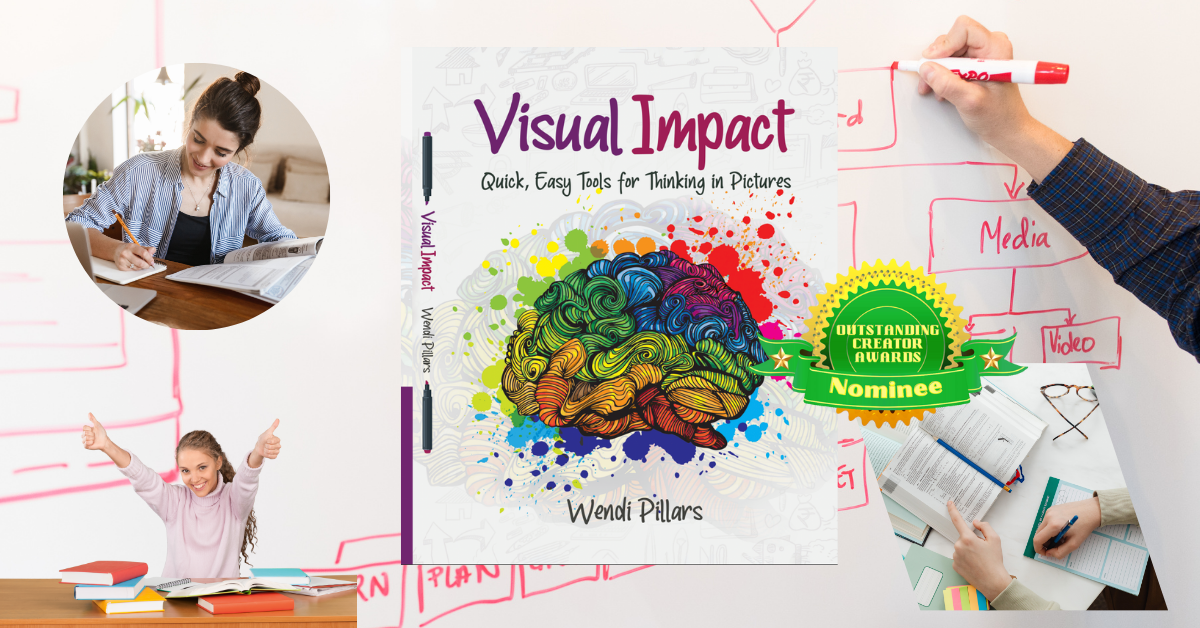|
Score: 91/100 (9.1 out of 10)
Visual Impact by Wendi Pillars is a richly informative educational resource to take your learning to the next level. This book is about learning to more efficiently and effectively use visual imagery, diagrams, and notes to process, remember, and utilize more information than ever before. This book also doubles as a collection of templates that can be copied and used by the user as needed, thus doubling as a workbook. What's more? You don't have to be an artist to benefit from using visual aids. Stick figures are fine! This book emphasizes the four domains of learning: reading, writing, listening, and speaking. So, it isn't only useful for students trying to learn. It could also be useful for a public speaker preparing to remember parts of a speech. It could be useful for an author trying to organize or storyboard their novel. It could be useful for a business leader trying to organize group-think ideas from the latest business meeting. This book also emphasizes the four step in which learning occurs: 1. the brain receiving input, 2. the brain reflecting, analyzing, and connecting this input, 3. the brain manipulating the information to make meanings, 4. the brain exhorting us to use or “do something” with that information. First and foremost, this is an impressive and ambitious book. It is jam-packed with information and ideas. That's both to its benefit and to its detriment. It's actually overwhelming a lot of the times. We constantly had a feeling that there was just too much information (TMI) and too much going on. That was true for both the prose and for the visual representations. If there was any book that needed to be simplified and more concise, it would be something like this that champions comprehension. However, all that doesn't take away from the fact that this is a solid and good book for what it is trying to accomplish. Think of it like this: this is a toolbox. It's not a book you necessarily have to read cover to cover in one or two sittings. It's a book you should read as part of a note-taking or life skills class, perhaps over the course of a week or a month. Like a toolbox, you don't have to use all of the tools all at once, nor should you. You should pick and choose the ones that work for your specific needs and your specific problems. With that in mind, this book becomes much more digestible and usable. So, what are these tools in the visual toolbox? They include things like colors, arrows, boxes, thought bubbles, bullets, borders, dividers, drawing, and more. There are also more complex concepts like community, dynamic visuals, and equity literacy. Now, a lot of these tools and techniques are things that you probably do already, either consciously or subconsciously. For example, some of us have used different colored highlighters to help differentiate between different kinds of information in textbooks. Many of us who have written or authored something have used boxes, lists, and diagrams to help to organize what we are writing (or intending to write). Many of us circle, box, or use checkmarks around bits of information that we'd particularly like to emphasize or try to remember. Almost all of us use arrows in notes and Power Point presentations to help connect ideas. Pillars elaborates on and explains how to better use these tools/techniques and how they work in conjunction with one another. This book also includes a useful collection of visual templates that you can copy and use as needed. Check it out on Amazon!
0 Comments
Leave a Reply. |
Archives
July 2024
Categories |

 RSS Feed
RSS Feed